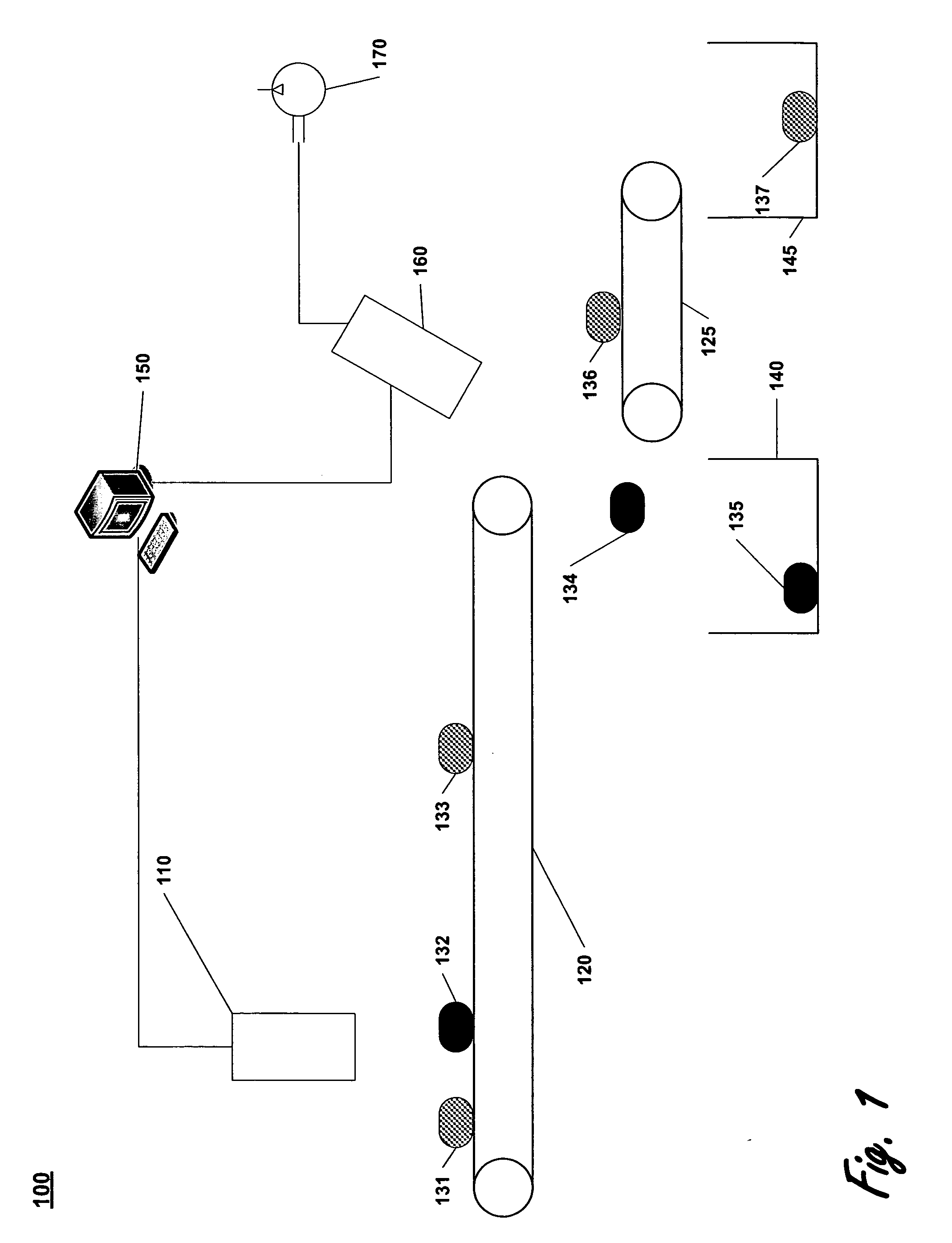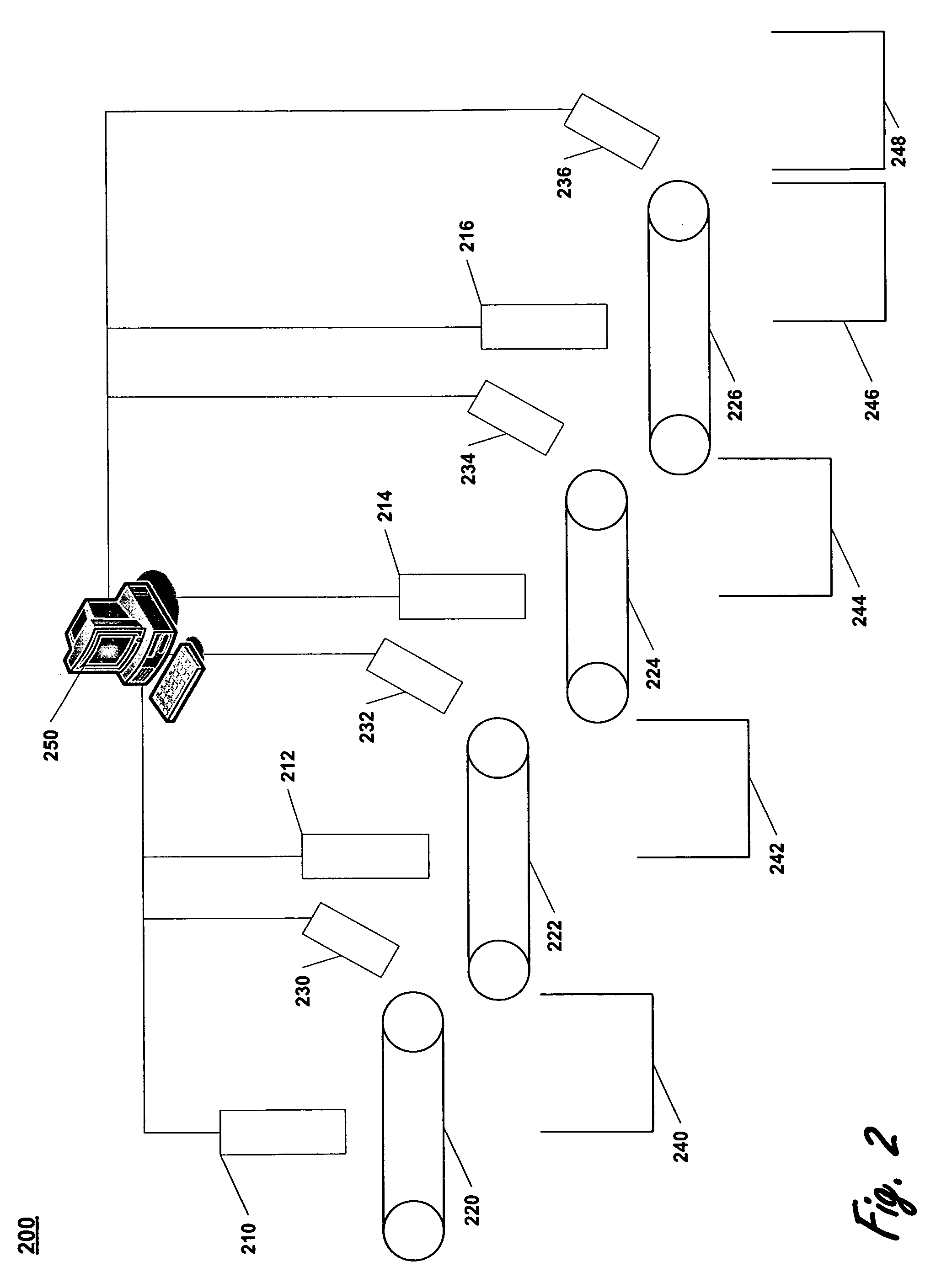System and method for sorting dissimilar materials using a dynamic sensor
- Summary
- Abstract
- Description
- Claims
- Application Information
AI Technical Summary
Benefits of technology
Problems solved by technology
Method used
Image
Examples
Embodiment Construction
[0018]Exemplary embodiments of the present invention provide systems and methods for processing metallic materials, such as copper, from waste materials. The systems and methods employ a dynamic sensor that identifies metallic objects in a waste stream. The dynamic sensor may be coupled to a computer system that controls a material diverter unit, which diverts the detected metallic objects for collection and possible further processing.
[0019]FIG. 1 depicts a dynamic sorting system 100 in accordance with an exemplary embodiment of the present invention. Referring to FIG. 1, material on a conveyor belt 120 moves under a dynamic sensor array 110. The dynamic sensor array 110 includes multiple dynamic sensors. A dynamic sensor is a modified inductive sensor. This modified sensor measures the rate of change of the amount of current produced in an inductive loop and detects the presence of metallic objects based on this rate of change. This process differs from how a standard inductive se...
PUM
 Login to View More
Login to View More Abstract
Description
Claims
Application Information
 Login to View More
Login to View More - R&D
- Intellectual Property
- Life Sciences
- Materials
- Tech Scout
- Unparalleled Data Quality
- Higher Quality Content
- 60% Fewer Hallucinations
Browse by: Latest US Patents, China's latest patents, Technical Efficacy Thesaurus, Application Domain, Technology Topic, Popular Technical Reports.
© 2025 PatSnap. All rights reserved.Legal|Privacy policy|Modern Slavery Act Transparency Statement|Sitemap|About US| Contact US: help@patsnap.com



